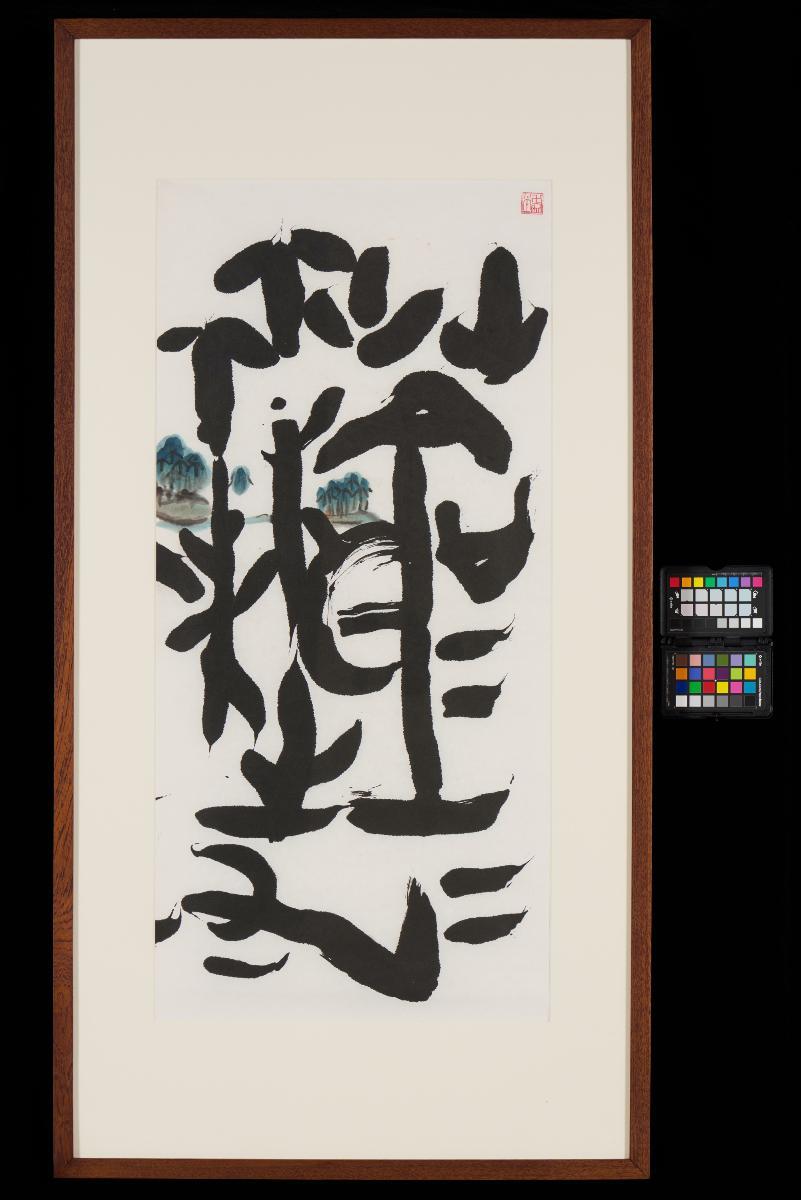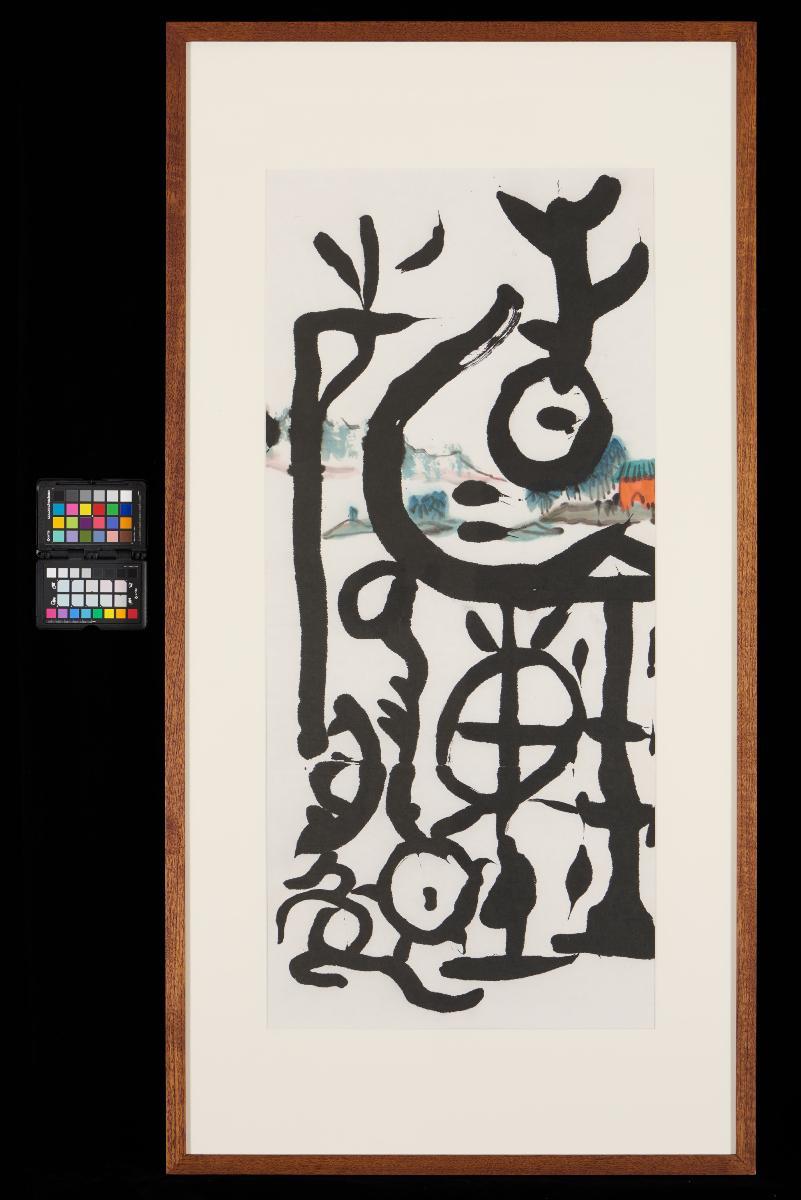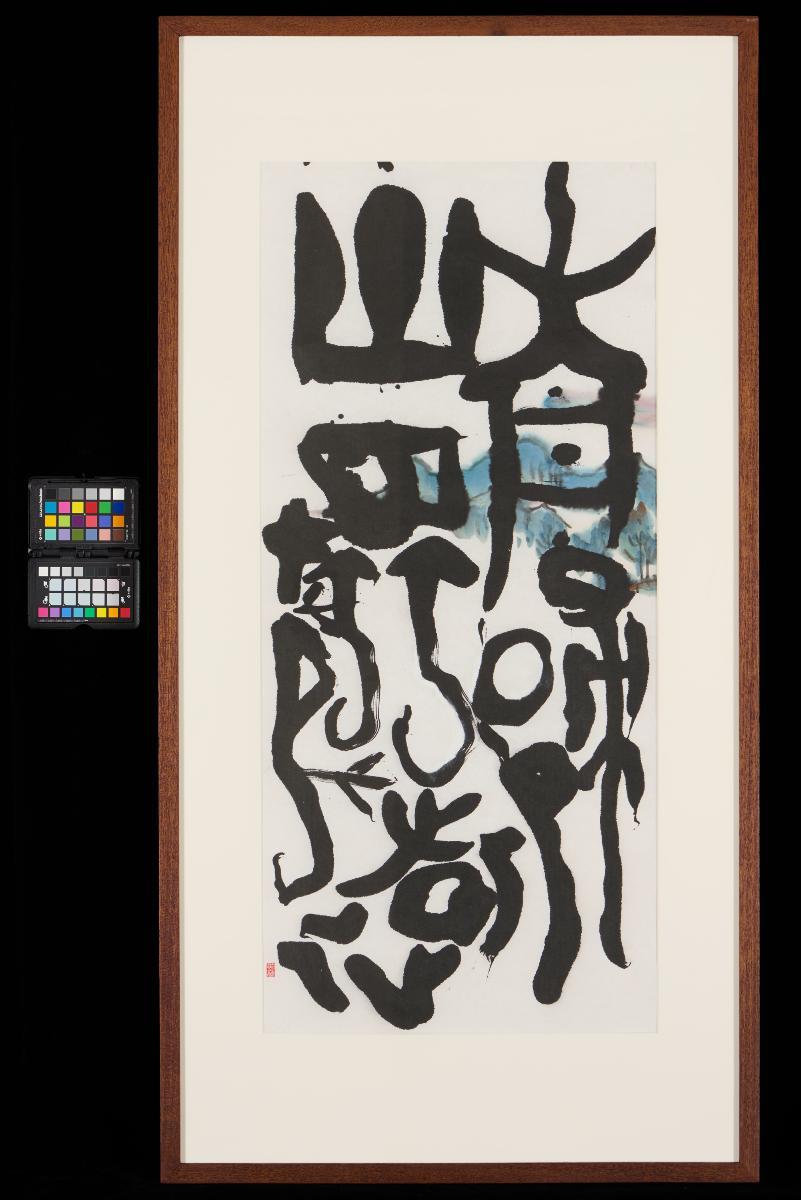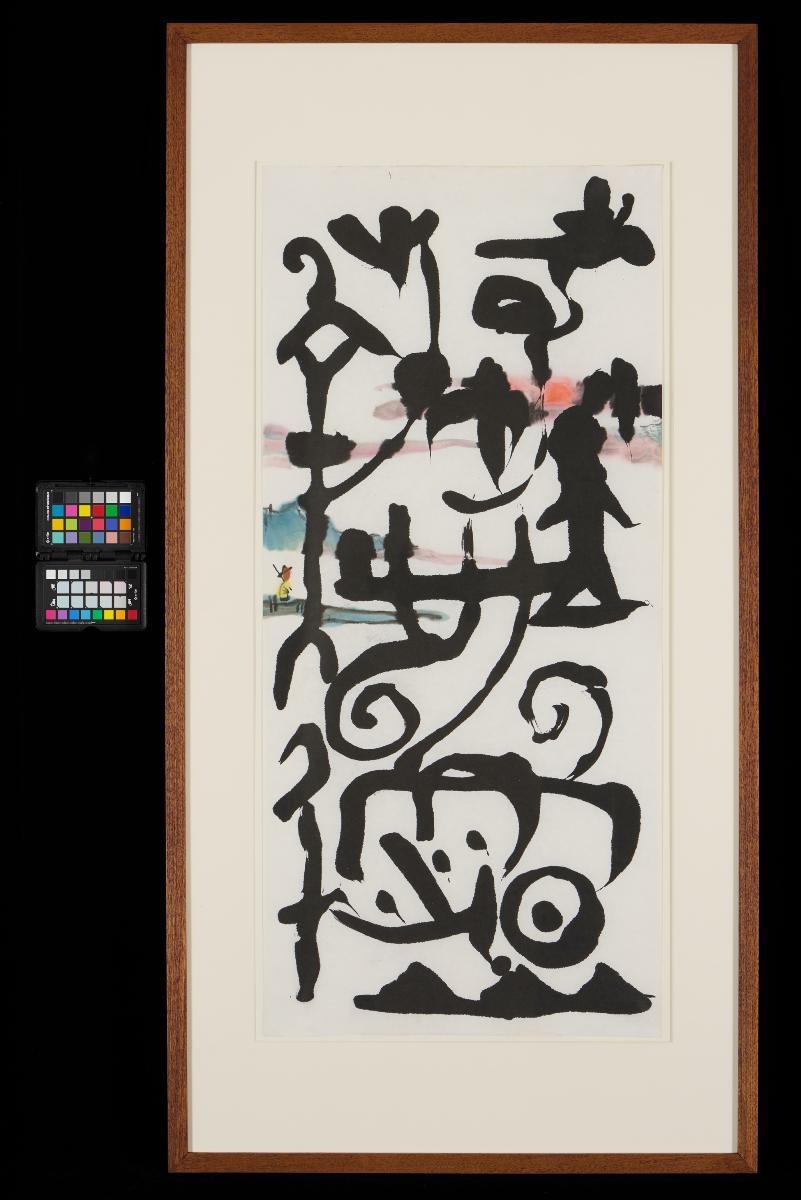Born to a literati family in Shanghai, China, Huang Yao (1914-1987) received his formative education from his father in classical literati traditions and calligraphy, particularly in the archaic scripts of oracle bone and bronze inscription. In the 1930s, he gained recognition as a talented cartoonist for creating the comic character “Niu Bi Zi” which was widely used as an educational resource in schools. Huang travelled to Southeast Asia after the end of World War II in 1945, and resided in different countries before settling permanently in Malaysia in 1956. He worked primarily as an art educator until his retirement in 1973. A prolific artist, he had held 23 solo and group exhibitions and six retrospective exhibitions.Huang is known for his unique creation of “wenzi hua” (calligraphic painting) which is the amalgamation of traditional Chinese culture and calligraphy, expressed in often seemingly abstract form. He took great delight in studying the ancient forms of the Chinese characters before deconstructing and recombining them. The poem by Tang poet Liu Changqing (c. 709-786) is written on four separate papers, each illustrating a line from it.















